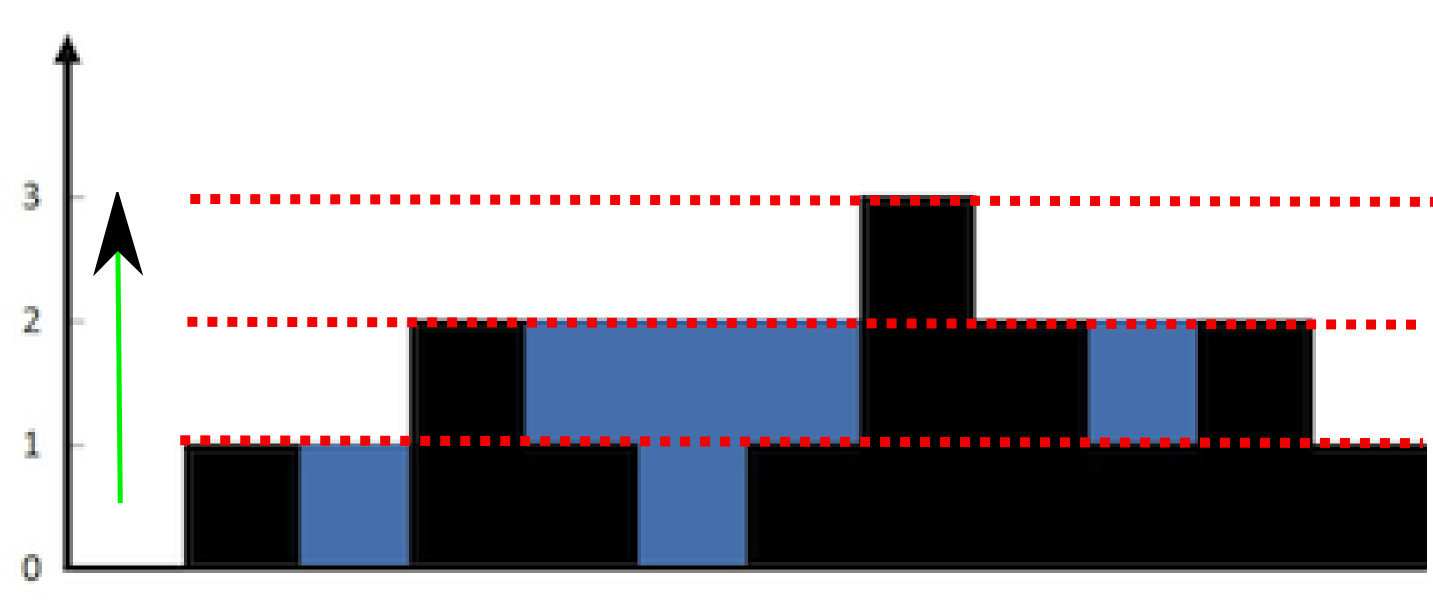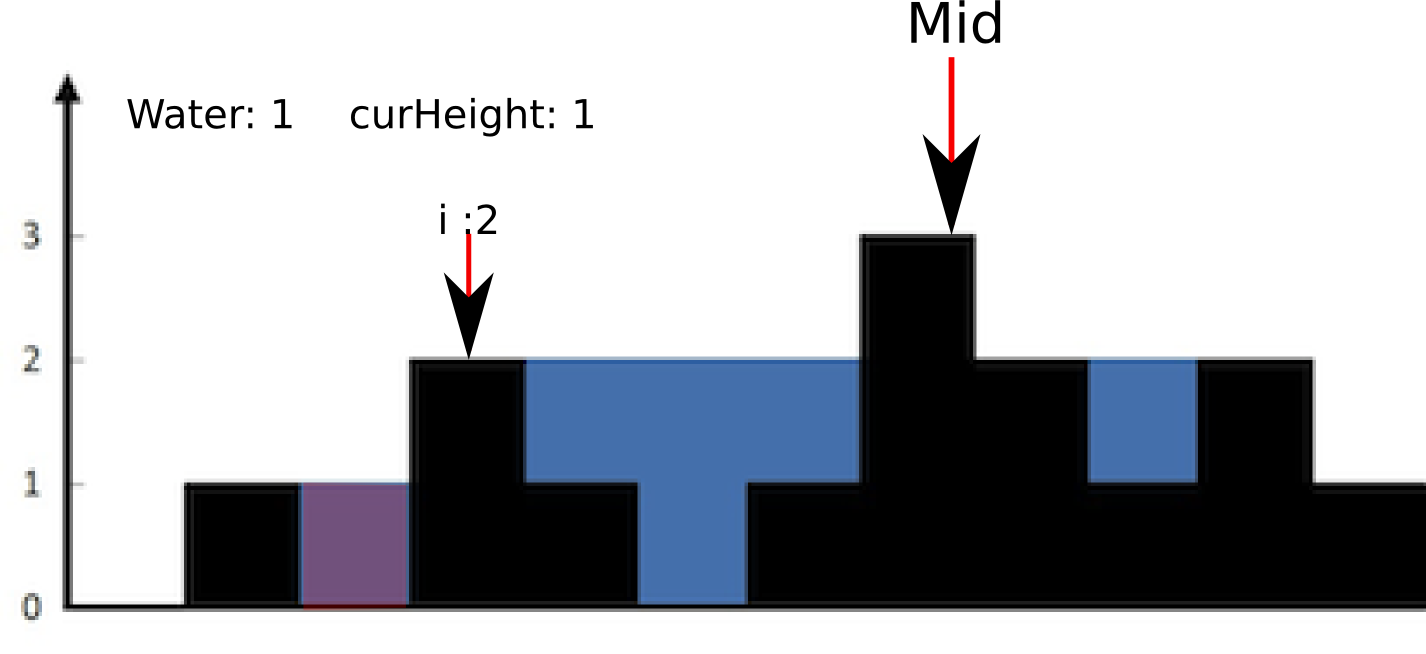题目:Given n non-negative integers representing an elevation map where the width of each bar is 1, compute how much water it is able to trap after raining.
For example,
Given [0,1,0,2,1,0,1,3,2,1,2,1], return 6.
![The above elevation map is represented by array [0,1,0,2,1,0,1,3,2,1,2,1]. In this case, 6 units of rain water (blue section) are being trapped. Thanks Marcos for contributing this image!](http://www.leetcode.com/wp-content/uploads/2012/08/rainwatertrap.png)
例如给出上图中的黑色部分(数组表示),让你求出蓝色部分。
这也是个神题。。。当然对小白我来说。
想了半天,是不是遍历数组呢,然后依次计算当前bar构成的container大小。问题在于,这个方法要考虑的边界条件太多了。写了一个很复杂的算法,还用到了stack来记录碎片的蓝色部分,结果最后还是miss很多情况。
后来想了一个复杂度比较高的但是代码看来了比较简单的算法。觉得简直要被BS屎了。但是还是记录下来以村托牛人的牛。
想的方法我取名叫俄罗斯方块法,为啥,你马上就晓得鸟。
把上面的图图,instead of看成一个个柱子,我看成一排排的方块。

然后,对每一行,我数数有多少蓝色的方块,累加起来,不就是总共的蓝色部分了么。
这个复杂度有点高,取决与最大的元素的值*O(n)。
解法一:

1 public static int trap(int[] A){ 2 int i = 0; 3 int j = A.length - 1; 4 int sumArea = 0; 5 while(i + 1 < j){ 6 //首先找到两边都不是0的位置 7 while(A[i] <= 0 && i < j)i++; 8 while(A[j] <= 0 && i < j)j--; 9 //然后数数当前行有多少蓝色方块,也是就0的个数啦。 10 //同时记录最小值 11 int min = Integer.MAX_VALUE; 12 for(int k = i; k < j;k++){ 13 if(A[k] == 0) sumArea += 1; 14 if(A[k] < min) min = A[k]; 15 } 16 //为记录下一行做准备,消除俄罗斯方块。。。。 17 int step = Math.max(min, 1); 18 for(int k = i; k <= j; k++){ 19 if(A[k] > 0)A[k]-= step; 20 } 21 } 22 return sumArea; 23 }
然后大集合就可耻地潮湿了。
leetcode的牛人是怎么做的呢?人家不仅有O(n)的解法,而且constant space。膜拜。
首先,找到最高的一个柱子,例如例子中的3。

然后遍历左半边。从i=0开始靠近mid,遍历过程中维护一个curHeight,表示这当前遇到的最大的height值;如果当前的bar的height小于最大值,那么当前的bar能贡献的water就是height - curMaxHeight。否则的话,更新curMaxHeight。
为了更好理解这个算法,我们来track下这个过程:






最后遍历右半边。过程是一模一样的,只不过i从最右边靠近Mid。
解法二
代码如下:

1 public static int trap2(int[] A){ 2 if(A.length <= 1) return 0; 3 int curMaxHeight = 0; 4 int water = 0; 5 int mid = 0; 6 for(int i = 0; i < A.length;i++){ 7 if(A[i] > A[mid]) mid = i; 8 } 9 10 for(int i = 0; i < mid; i++){ 11 if(A[i] < curMaxHeight){ 12 water += curMaxHeight - A[i]; 13 }else curMaxHeight = A[i]; 14 } 15 16 curMaxHeight = 0; 17 for(int i = A.length - 1; i > mid; i--){ 18 if(A[i] < curMaxHeight){ 19 water += curMaxHeight -A[i]; 20 }else curMaxHeight = A[i]; 21 } 22 return water; 23 }
其实,本质上来说,第一步保障了左右两边的水总是能“放进去”,因为大板子在中间档着嘛。
Faint,我写到这里,想到这个代码其实也是蛮简单的,为啥我就没想到呢!唉。。。
总结下:
复杂的代码是错误的代码。没有例外。
